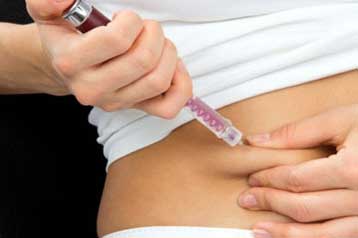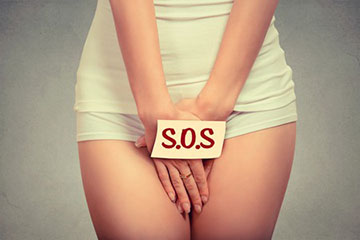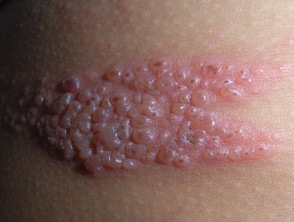Breast Implants
Specific Issues to Consider
Mammography
Women with breast implants who are in an age group where routine mammograms are recommended should be sure to have these examinations at the recommended regularly scheduled times. Some women who undergo reconstruction will have some breast tissue remaining, and some have all of their breast tissue removed. It is important that a woman with remaining breast tissue continue to have mammography of that breast, as well as of the other breast, to detect breast cancer. (Those who have had breast cancer surgery on both breasts should ask their doctors whether mammograms are still necessary.)
Women should be aware that breast implants may interfere with the detection of cancer and that breast compression (hard pressure) during mammography may cause implant rupture/deflation.
Interference with mammography by breast implants may delay or hinder the early detection of breast cancer either by hiding suspicious lesions (wounds or injuries or tumors) or by making it more difficult to include them in the image (x-ray, ultrasound). Implants increase the difficulty of both taking and reading mammograms.
Mammography requires breast compression, which could contribute to implant rupture. According to the FDA adverse event database, there were 41 reported cases of breast implant rupture during mammography reported between 1992 and 2002.46 An additional 17 cases of rupture during mammography were reported in the medical literature.
In addition to special care taken by the radiological technologist to reduce the risk of implant rupture during this compression, other techniques are used to maximize what is seen of the breast tissue during mammography. These techniques are called breast implant displacement views, Eklund displacement views, or Eklund views, named for the radiologist who developed the techniques. These special implant displacement views are done in addition to those views done during routine mammograms.
Because of the extra views and time needed, women with implants should always inform the receptionist or scheduler that they have breast implants when making an appointment for mammography. They should also tell the radiological technologist about the presence of implants before mammography is performed. Then, the radiological technologist will use these special displacement techniques and take extra care when compressing the breasts to avoid rupturing the implant.
The displacement procedure involves pushing the implant back and pulling the breast tissue into view. Several factors that may affect the success of this special technique in imaging the breast tissue in women with breast implants include the location of the implant, the hardness of the capsular contracture, and the amount of the breast tissue compared to the implant size.
Also, when reading the mammogram, the radiologist may find it difficult to distinguish calcium deposits in the scar tissue around the implant from a breast tumor. Occasionally, it is necessary to remove and examine a small amount of tissue (biopsy) to see whether or not it is cancerous. Frequently, this can be done without removing the implant.
As a last note, FDA does not consider mammograms an adequate means of detecting implant rupture/deflation for silicone gel-filled breast implants. As described in the Local Complications & Reoperations (Rupture/Deflation of Silicone Gel-Filled Breast Implants) section above, FDA believes that MRI is currently the best method for detecting implant rupture for silicone gel-filled breast implants.
Breast Feeding
Women of childbearing age should know that they may not be able to breast feed after breast implantation. Some women who undergo breast augmentation can successfully breast feed and some cannot. Women who undergo a mastectomy will be unable to breast feed on the affected side due to loss of breast tissue and glands that produce milk.
The IOM report47 said that women with either silicone gel-filled or saline-filled breast implants showed lactation insufficiency (not enough milk) ranging from 28-64%. The periareolar approach (incision cite is around the nipple) was the factor most associated with lactation insufficiency.
Having a breast implant may also influence a woman's decision about whether or not she will try to breast feed, particularly if she has capsular contracture or is worried about problems with the implants. 48
Effects on Children
There are two concerns associated with the effects on children:
- the safety of the milk from mothers with breast implants for breast feeding children
- the effects of silicones and other chemicals on children born of mothers with breast implants (second-generation effects).
It is not known if a small amount of silicone may pass from the silicone shell of an implant into breast milk. If this occurs, it is not known what effect it may have on the nursing infant. There are no current methods for detecting silicone levels in breast milk. The IOM report49 said that there is convincing evidence that infants breast-fed by mothers with breast implants receive no higher silicon intakes from breast milk than infants breast-fed by mothers without breast implants. (Silicon is an element that is one component of the polymer silicone and is one of the most abundant elements on the earth. Everyone is exposed to silicon.)
Concerns have been also raised about the potential damaging effects on children born of mothers with implants. The IOM report50 said that the information is insufficient or flawed to draw definite conclusions about this issue. In other words, it is not known what effect breast implants may have on an unborn baby (fetus) and the nursing infant.
Several studies since the IOM report have suggested that the risk of birth defects overall is not increased in children born after implant surgery.51,52 These studies are comforting, but, because they are small and of short duration, they cannot rule out a very small risk.
Suicide
Several recent studies have found a slight increase in deaths due to suicide among women with cosmetic breast implants. 53,54,55 The reason for this increase is unknown although some suggest that this may be due to underlying psychological problems in women who get breast implants for cosmetic reasons.56,57 Others have suggested that women may be distressed because of the burden of breast implant complications.58
Gel Bleed
A concern related specifically to silicone-gel filled breast implants is that small amounts of the silicone fluid or oil may bleed through the shell and travel into the surrounding tissue. This escaped silicone fluid or oil might cause local complications. There is inadequate information to determine whether or not gel bleed is a problem because there have been no studies that measure the amount of gel bleed and relate it to local complications.
Platinum
Platinum is a metal used in the manufacture of some breast implants. Recent scientific literature indicates that the platinum leaches (leaks) from these implants and is present in the surrounding tissue.59 Because certain chemical forms of platinum can cause allergic reactions, there has been concern that platinum that leaches from the implants may be harmful. FDA scientists reviewed the currently available studies from the medical literature on platinum and breast implants and did not find evidence that leached platinum causes illness in women with breast implants.60
Silicone Sensitivity
Currently, there are no FDA-approved tests to detect silicone in the body or to determine whether or not a woman's immune system is sensitive to any component of silicone breast implants.
Determining that silicon or silicone is present in body fluids does not indicate whether a person is sensitive to these substances or at risk for any specific disease. (Silicon is an element that is one component of the polymer silicone and is one of the most abundant elements on the earth. Everyone is exposed to silicon.) Some researchers claim to have a test that can detect antibodies to silicone in blood; however, the proven accuracy and usefulness of the test has not been determined. Some researchers have also claimed that a test called the Anti-Polymer Antibody Assay (APA) is able to distinguish signs and symptoms of disease ranging from mild to severe in women with implants. However, a recent report61 failed to find an increased level of APA activity in women who had silicone breast implants and health complaints compared with healthy women without implants. The accuracy of this test, the clinical usefulness of the test results, and the biological basis for the assay has not been established.
Even if antibodies to silicone were detected, the importance would be unclear. Antibodies to silicone would not necessarily mean that silicone is harmful or that a person would necessarily have an adverse reaction to it. Some researchers have also reportedly developed a test to detect if a woman's immune system is sensitive to silica, a component found in silicone breast implants. The accuracy of this test also has been questioned, and it is not clear at this time whether the results of this test have clinical usefulness.
Recent published results62 indicate that silicon and certain silicones found in breast implants are present in tissues surrounding these implants. However, the results do not provide evidence that either silicon or the detected silicones are responsible for adverse immunological (or other toxic) reactions to breast implants. One or more of the silicones found in these studies are also found in food and many other products, including commonly used medicines and cosmetics. Therefore, exposure to these silicones from other sources is widespread. Although there is continued interest in potential adverse reactions to silicones, the current scientific information does not provide convincing evidence of adverse immunological effects.
Polyurethane Foam-Coated Breast Implants
This section is applicable to those women who received a polyurethane foam-coated breast implant.
Until the polyurethane foam-coated breast implants were taken off the market in 1991 because of concerns that the coating might increase the risk of breast cancer, about 10% of women with breast implants received the polyurethane foam-coated type of breast implant. The polyurethane foam coating released small quantities of the chemical called TDA (2,4-toluenediamine) that has been shown to cause cancer in animals.
Because of this concern, the manufacturer of the polyurethane foam-coated implants, Bristol-Myers Squibb Company, analyzed the urine of women with these devices for TDA.63 Researchers found TDA in the urine but in such tiny amounts that the risk of cancer from the polyurethane foam-coated implants is only about one in a million over a woman's lifetime. Therefore, it is unlikely that even one of the estimated 110,000 women who got the polyurethane foam-covered implants will get cancer as a result of exposure to the TDA. This study supports FDA's recommendation that women with polyurethane foam-covered breast implants should not have them removed based solely on concerns about cancer from TDA.
Concerns have also been raised about whether the TDA from the polyurethane foam-coated implants could increase the risk of cancer to a nursing infant. FDA required the company to analyze mother's milk for TDA, but the company was unable to get enough lactating women with these implants to conduct a valid study.
TrilucentT Breast Implants
This section is applicable to those women who received TrilucentT breast implants.
The TrilucentT is an alternate breast implant that consists of a silicone shell filled with purified soybean oil. Although the TrilucentT breast implants were once part of an IDE study, which is now closed, the TrilucentT breast implants were never approved for marketing in the U.S. They were, however, approved for marketing in Europe. The Medical Device Agency (MDA), the British equivalent of the FDA, removed TrilucentT breast implants from the market in the United Kingdom in March 1999 as a result of their investigation of reported adverse events. Their concern was that breakdown products of the soybean oil filler in TrilucentT breast implants could cause cancer.
FDA Breast Implant Consumer Handbook - 2004
U. S. Food and Drug Administration
http://www.fda.gov/cdrh/breastimplants/handbook2004/glossary.html






